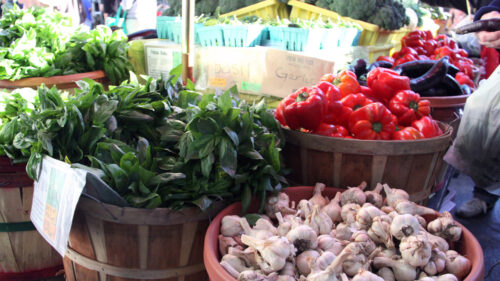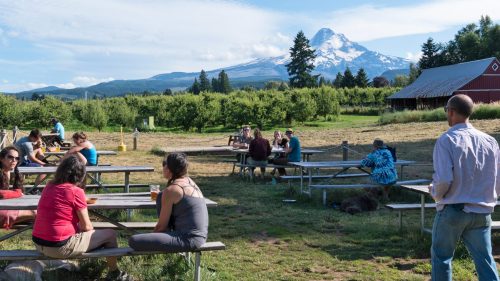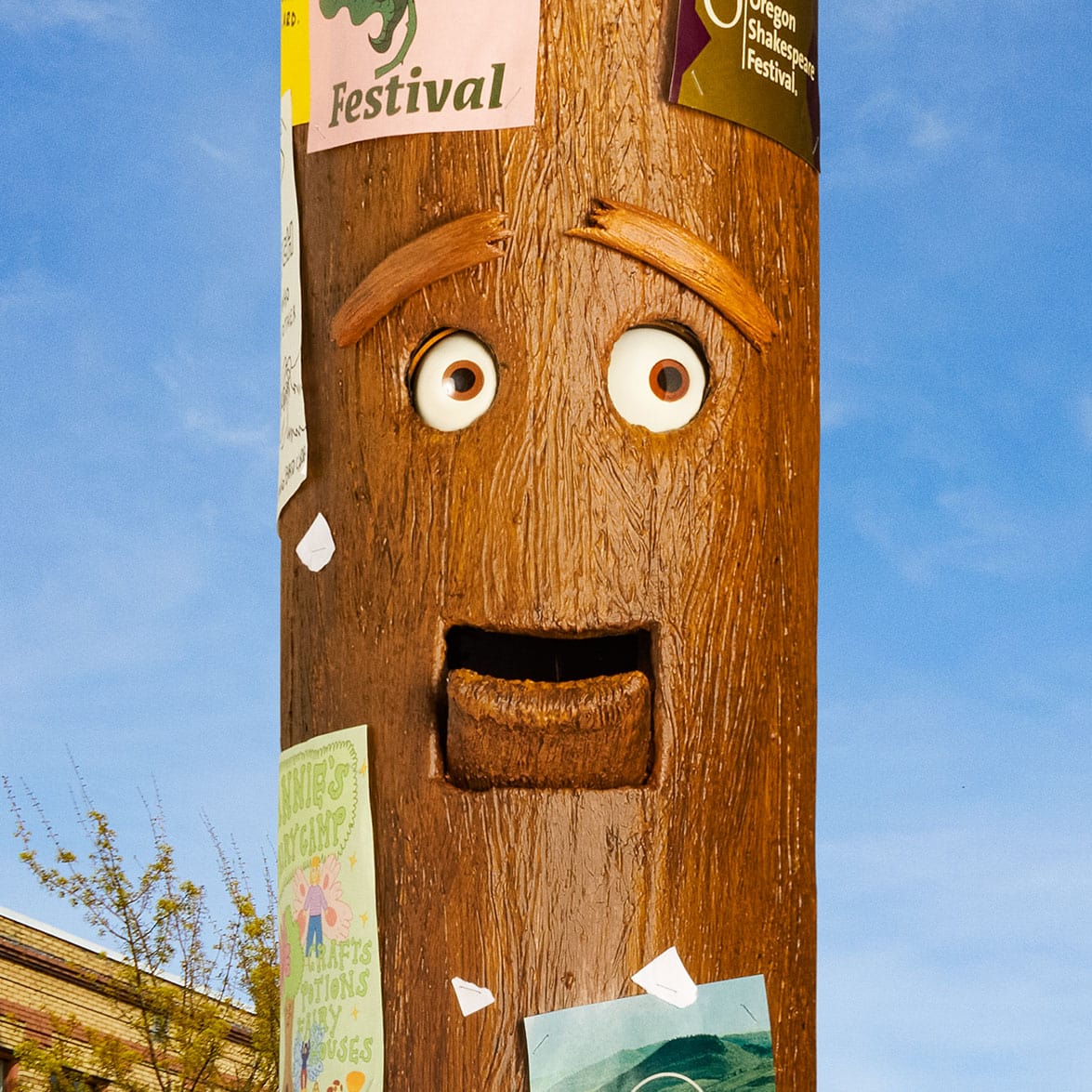Oregonians are unapologetically passionate about food and drink. It’s no wonder, considering the amazing natural ingredients at our disposal — from our fresh-caught salmon and wild-foraged mushrooms to hand-harvested sea salt and farm-fresh seasonal produce. Did we mention our famous hazelnuts, artisan cheeses, estate-grown wines, seasonal craft brews and ciders, and growing spirits scene?
No surprise, then, that Oregon continues to draw attention for its culinary mastery, with its chefs regularly earning spots on the Emmy-winning television series “Top Chef.” (Fun fact: The show’s latest season was filmed in Portland as well as the Mt. Hood and Columbia River Gorge region, Oregon Coast and Willamette Valley, a testament to Oregon’s place at the national table.)
Visitors can experience this passion and year-round bounty at farmers markets, U-picks, seafood counters, cooking schools and tasting rooms by following one of the many Oregon Food Trails — a hungry road-tripper’s best friend.
Oregon’s restaurants saw a challenging year in the midst of closures, reopenings and new protocols to keep everyone safe. But the industry came through in a big way to give back to those in need in the early days of the COVID-19 pandemic.
More than 100 Portland-area restaurants worked with the national nonprofit Frontline Foods to send food to nurses and doctors across the region, donating more than 10,000 meals to frontline workers at local health care facilities. When you’re dining out, consider showing your appreciation with a little extra gratuity. A bit of kindness goes a long way.
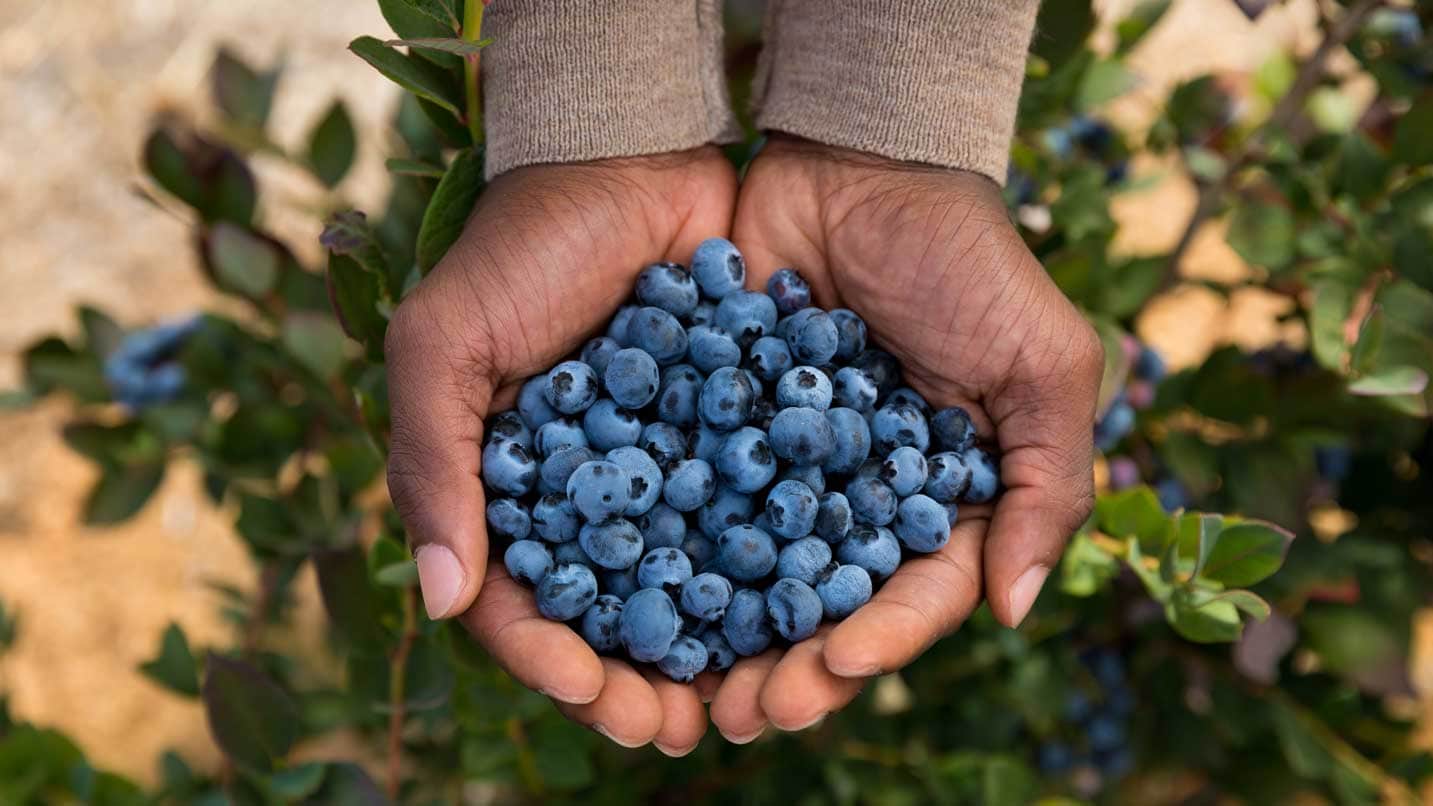
Oregon Fruit
Summertime in Oregon is all about the fruit — plump, juicy berries we find at the state’s farm stands and farmers markets to fruit-infused drinks and dishes at acclaimed restaurants. Come June strawberries, raspberries and cherries begin to appear in the orchards, many growing in the shadow of Mt. Hood on hillsides overlooking the Columbia River. In July the berry bounty continues with blackberries, blueberries, boysenberries and Oregon’s own marionberries — a fruit first developed at Oregon State University in 1956. Toward the end of the summer, attention turns to apples, pears and plums; Oregon ranks second in the nation for pear production, with the majority of the fruit harvested in the Mid-Columbia and Rogue Valleys.
Find U-pick farms across the state, from the heritage orchards of the Columbia Gorge and organic farms in the Willamette Valley to sprawling properties in Southern Oregon and abundant berries on the Southern Oregon Coast.
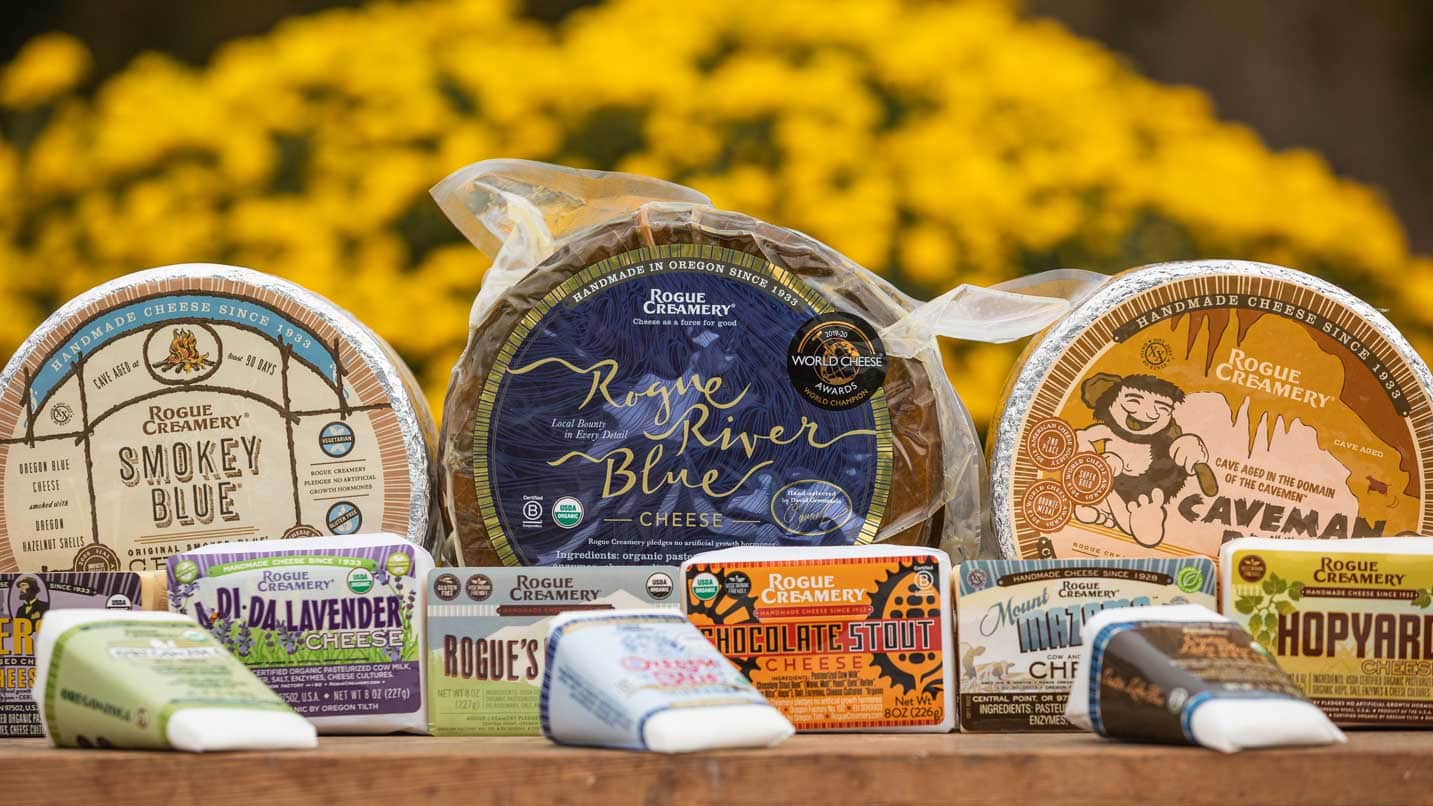
Oregon Cheeses
Without a doubt, Oregon’s cheeses are varied and distinct — you can find a whopping 250 varieties of sheep, cow and goat cheeses made in the state. And the secret is out: The state’s cheesemakers regularly win at national and international competitions. Taste the inventive flavors for yourself, like Rogue Creamery’s internationally famous Rogue River Blue made annually on the autumnal equinox, tangy clothbound cheddar from Face Rock Creamery that earned them a 2019 Good Food Award, pinot-crushed Gouda from Willamette Valley Cheese Co., and queso fresco from Ochoa’s Queseria, to name a few. Better yet, set out on a culinary road trip using the Oregon Cheese Guild’s Oregon Cheese & Food Trail, which details the locations of all 24 member cheesemakers, as well as farmers markets, cheese bars and restaurants selling local cheese.
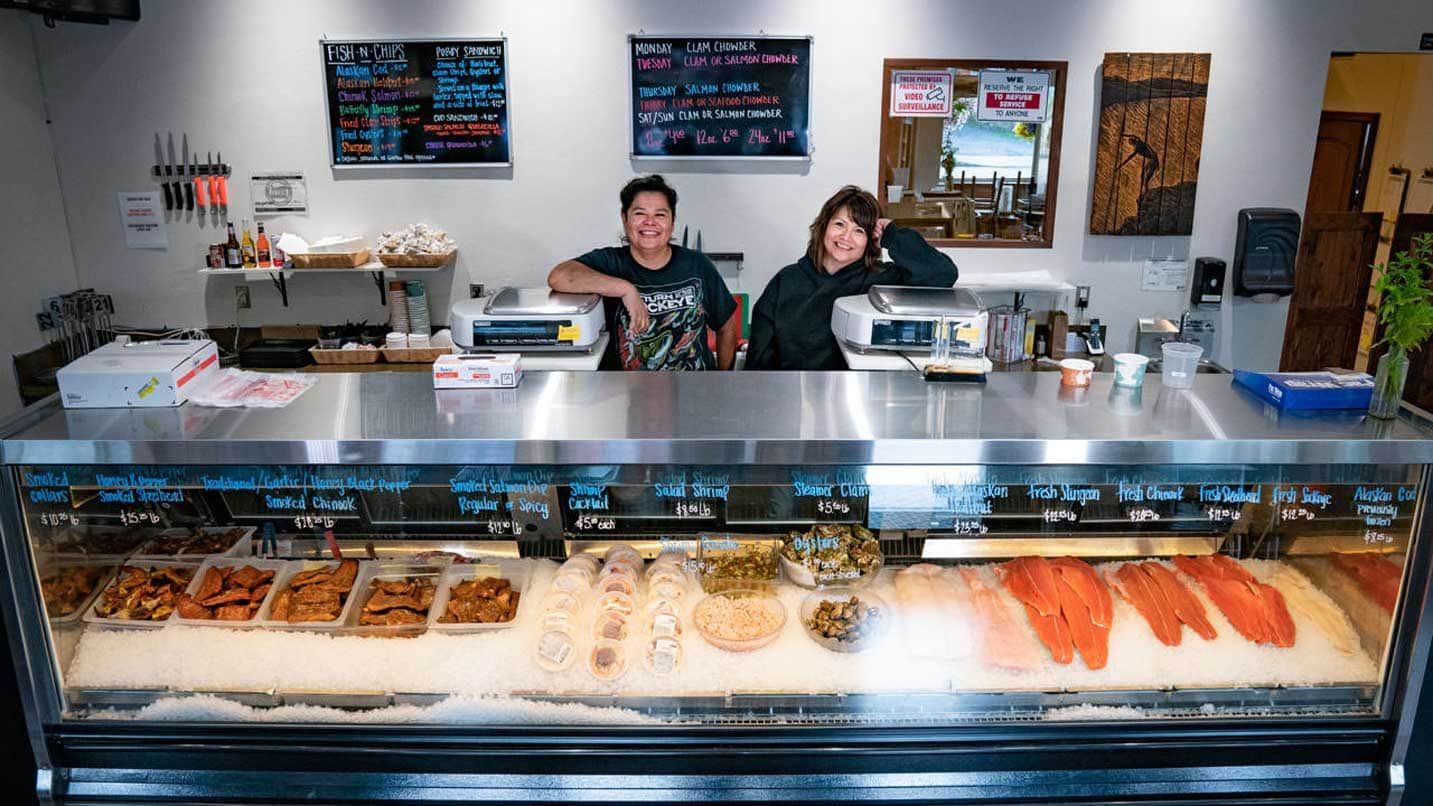
Oregon Seafood
For seafood lovers, Oregon’s coastal bounty is hard to beat. In Oregon, we pull our seafood directly from the ocean, dig it from a beach, or pluck it from a bay. You can rent a skiff and a few crab rings, hop on a charter boat, or just stop by a bayside fishmonger to see what came in that day. Up and down the Oregon Coast you’ll find what we consider the world’s best clam chowder and fresh fish tacos. Savor meaty and decadent Dungeness Crab (freshest from December to August), Pacific halibut in the summer, and Pacific rockfish is nearly year round. The state’s most popular fish, the salmon, is highly seasonal and in high demand; find fresh coho between July and September and chinook between April and October. Oregon is famous for Olympic and Pacific oysters; both are delicious baked, grilled, breaded and fried or raw on the half shell, and best savored with a glass of Oregon chardonnay or pinot gris.

Oregon Coffee
Coffee isn’t just a beverage in Oregon. It’s a culture. That much is clear by the more than 200 specialty coffee shops and micro-roasters throughout the state, including 80 roasters in Portland alone. Local life revolves around the roasted bean. Whether your morning starts in sunny Eastern Oregon, in a foggy coastal town or smack in the middle of Portland’s bustling commute, you’ll find a robust local cafe in the heart of things. We think a great cup of coffee is worth the fuss, which is why we’ve nurtured award-winning artisan roasters like Noble Coffee Roasting in Ashland, Heart Coffee Roasters in Portland, Seaside Coffee Roasters and Kainos Coffee Roasters in The Dalles.
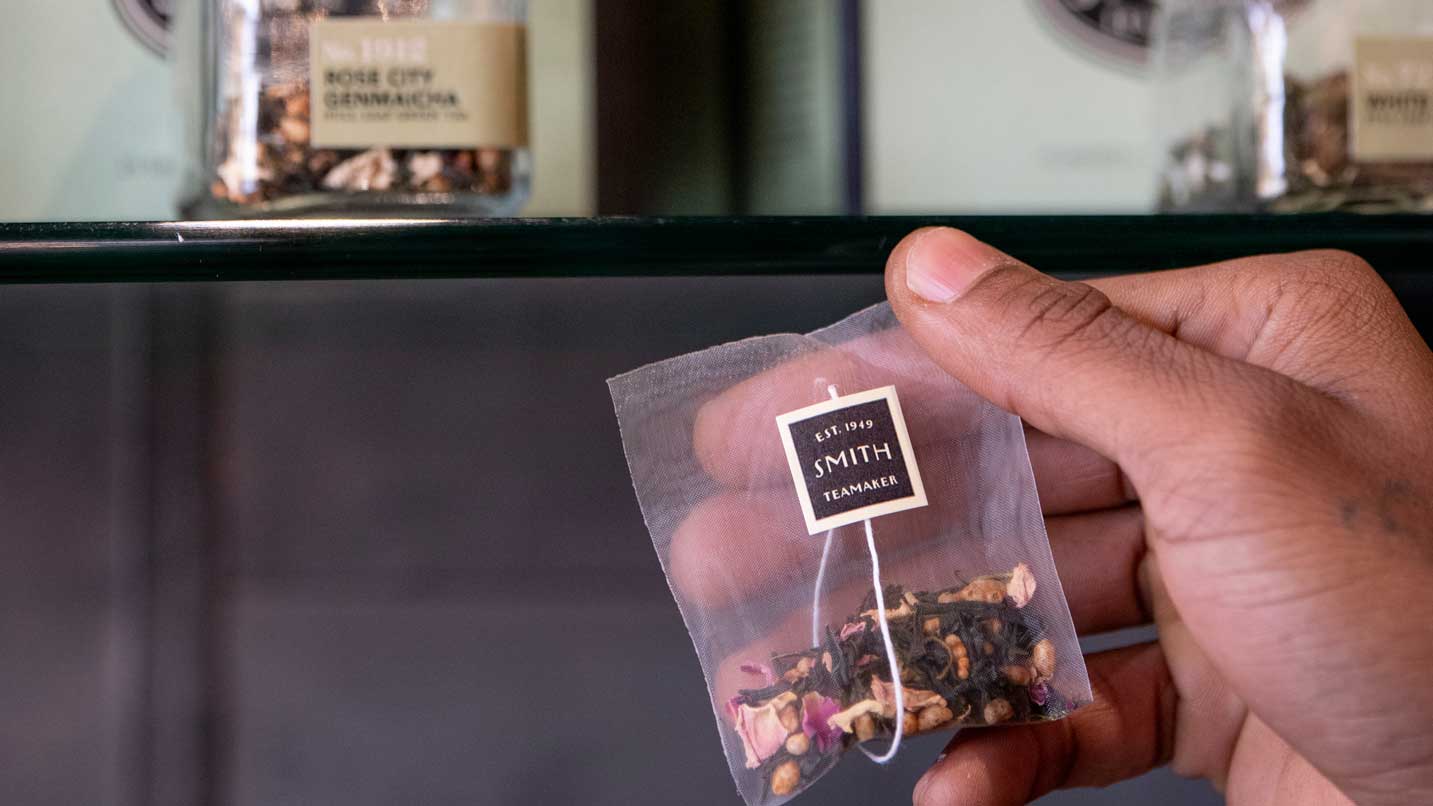
Oregon Tea
Oregon also has a passion for specialty teas, reflected by the likes of Smith Teamaker, The Tao of Tea and Tea Chai Té, which each offer endless varieties to choose from. The new Mamancy Tea Co. in Beaverton showcases fine teas from around the world, curated by the Kenyan-born owner, a certified tea sommelier. You can’t have tea without a cozy space for sipping; Eugene’s Oolong Bar and the glass-walled Tea Garden at the Portland Japanese Garden are favorite tranquil spots for tea lovers. Velvet Monkey Tea in McMinnville offers more than 100 varieties of black, white, green, oolong and herbal teas, and the organic farm of Minto Island Tea Company in Salem is Oregon’s first commercial tea grower.
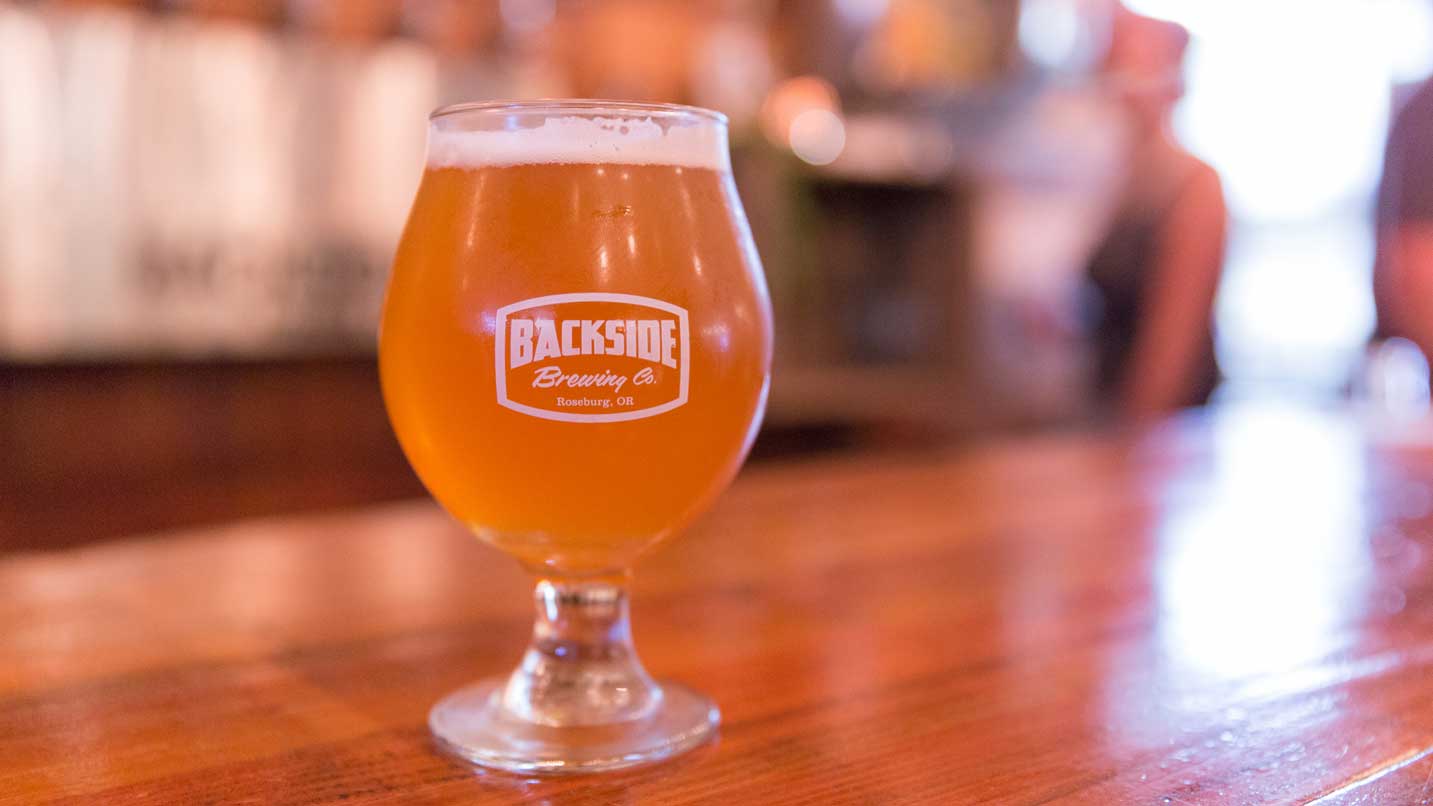
Oregon Beer
Oregon’s craft-beer scene has always been about quality, innovation and passion, and anyone who’s visited a craft brewpub in Oregon can feel the inspiration behind each brew. From double-hopped IPAs to barrel-aged porters, envelope-pushing sours and thirst-quenching summer ales, Oregon’s beers are not just highly drinkable — they go on to win loads of national awards each year. But we don’t need to know the stats to know good beer.
A number of official ale trails makes it easy to navigate your way through the state’s top craft breweries. The Eugene Ale Trail takes visitors to 22 regional tasting rooms with a passport program and various prizes. The Bend Ale Trail includes a tour of 23 high-desert breweries and its own special reward for designated drivers. The Salem Ale and Cider Trail hits 11 stops for great beer and cider. Oregon’s North Coast Craft Beer Trail includes 13 breweries between Astoria and Pacific City, while the Mt. Hood Territory Tap Trail introduces visitors to 15 distinct cider, spirit and beer crafters. Don’t miss the Breweries in the Gorge trail, which hits 12 hoppy stops. Find at least a dozen more pubs to raise a glass to along the Eastern Oregon Brews Byway, and 14 more craft-brew standouts in Medford, Grants Pass and Ashland along the Southern Oregon Ale Trail.
One of the best ways to experience the state’s brew culture is through a guided tour, available in most regions with safety at top of mind. Many tour operators offer limited group sizes or the option to book a private party, and are following enhanced safety and hygiene protocols. You can even go by foot or bicycle in the Portland area, and enjoy that fresh air. Similar tours are also offered in Bend and smaller towns like McMinnville.
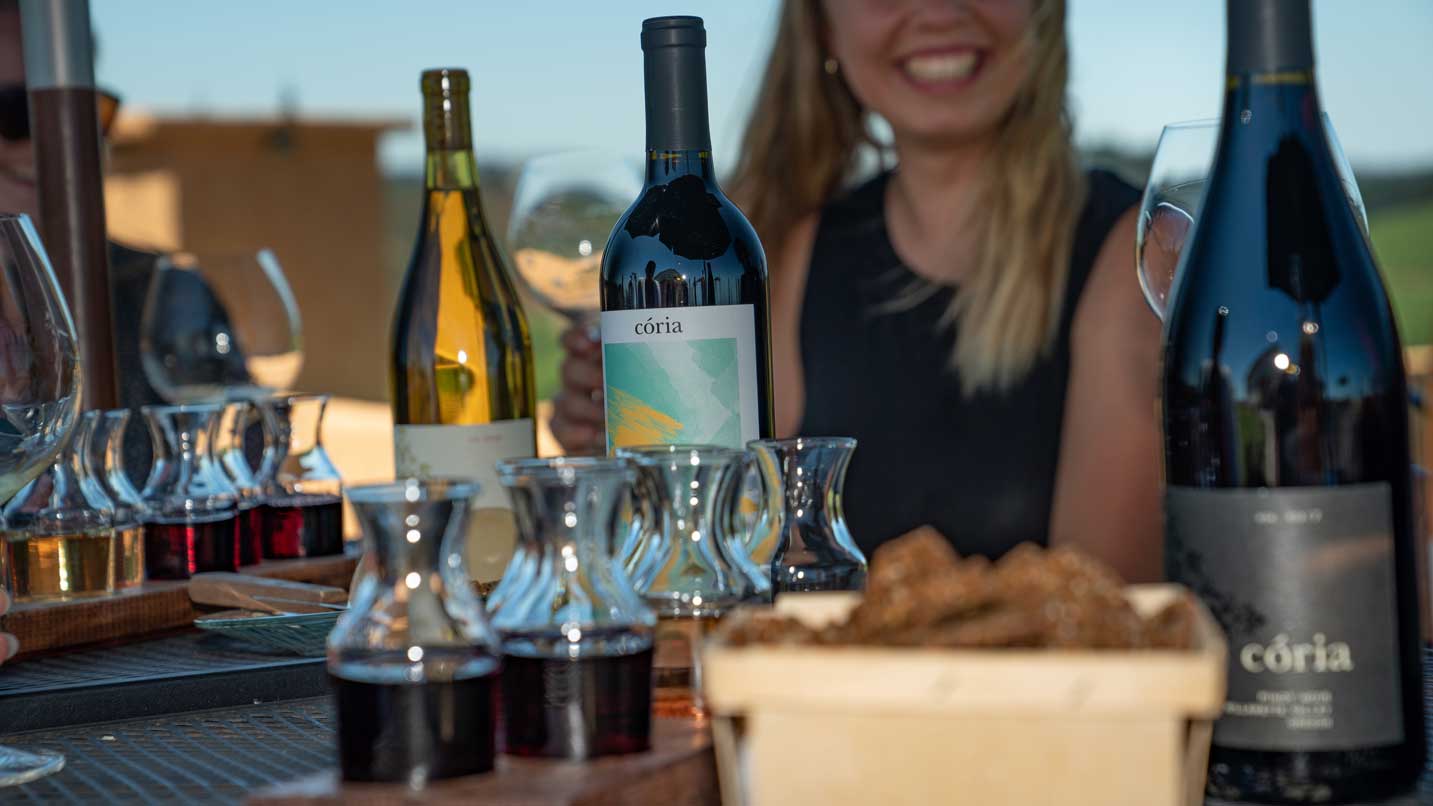
Oregon Wine
The state’s wine industry has come a long way since its humble beginnings, when a few rogue dreamers planted vines in the Willamette Valley. The state’s wine scene has blossomed to more than 850 vineyards, 650 wineries and 21 distinct growing areas (also known as American Viticultural Areas, or AVAs) and is the third largest wine-grape-producing state in the nation. Our talented vintners regularly earn international and national accolades. And yet that early spirit of modesty remains.
Nestled between the Coast and Cascade mountain ranges, the Willamette Valley AVA is most famous for world-class pinot noir, as well as stellar pinot gris, chardonnay and other cool-climate wines. The fertile region has nurtured nine distinct sub-AVAs in a patchwork of distinct growing areas: Chehalem Mountains, Dundee Hills, Eola-Amity Hills, McMinnville, Ribbon Ridge, Van Duzer Corridor, Yamhill-Carlton, and the brand-new Laurelwood and Tualatin Hills districts of the Tualatin Valley. On the verdant land within the Columbia Gorge and Columbia Valley AVAs, winemakers create more than 30 varietals at dozens of wineries, inspired by the region’s daring outdoor lifestyle — bold barberas, spicy sangioveses and crisp gruner veltliners. Southern Oregon’s surprisingly warm corner of the state nurtures hot-blooded wine: tempranillo, cabernet franc and albariño, along with pinot noir. Vigorous microclimates create five separate sub-AVAs — Rogue Valley, Umpqua Valley, Elkton, Illinois Valley and Applegate Valley — with more than 150 wineries. Take a little exploration of your own along the Upper Rogue, Applegate, Bear Creek or Jacksonville wine trails, and look for the Oregon Wine Experience celebration in Jacksonville in August. The southernmost slice of the Walla Walla Valley AVA features Oregon wineries that are small in number and big on character. Milton-Freewater is home to eight tasting rooms in the Rocks District AVA, and Copper Belt Winery’s tasting room in Baker City is part of the Snake River AVA. Some of our richest tasting experiences resist categorization, like Portland urban wineries and new tasting rooms clustering around downtown Bend.
Wherever you sip in the state, remember that Oregon wines fly free on Alaska Airlines, which makes traveling a breeze.
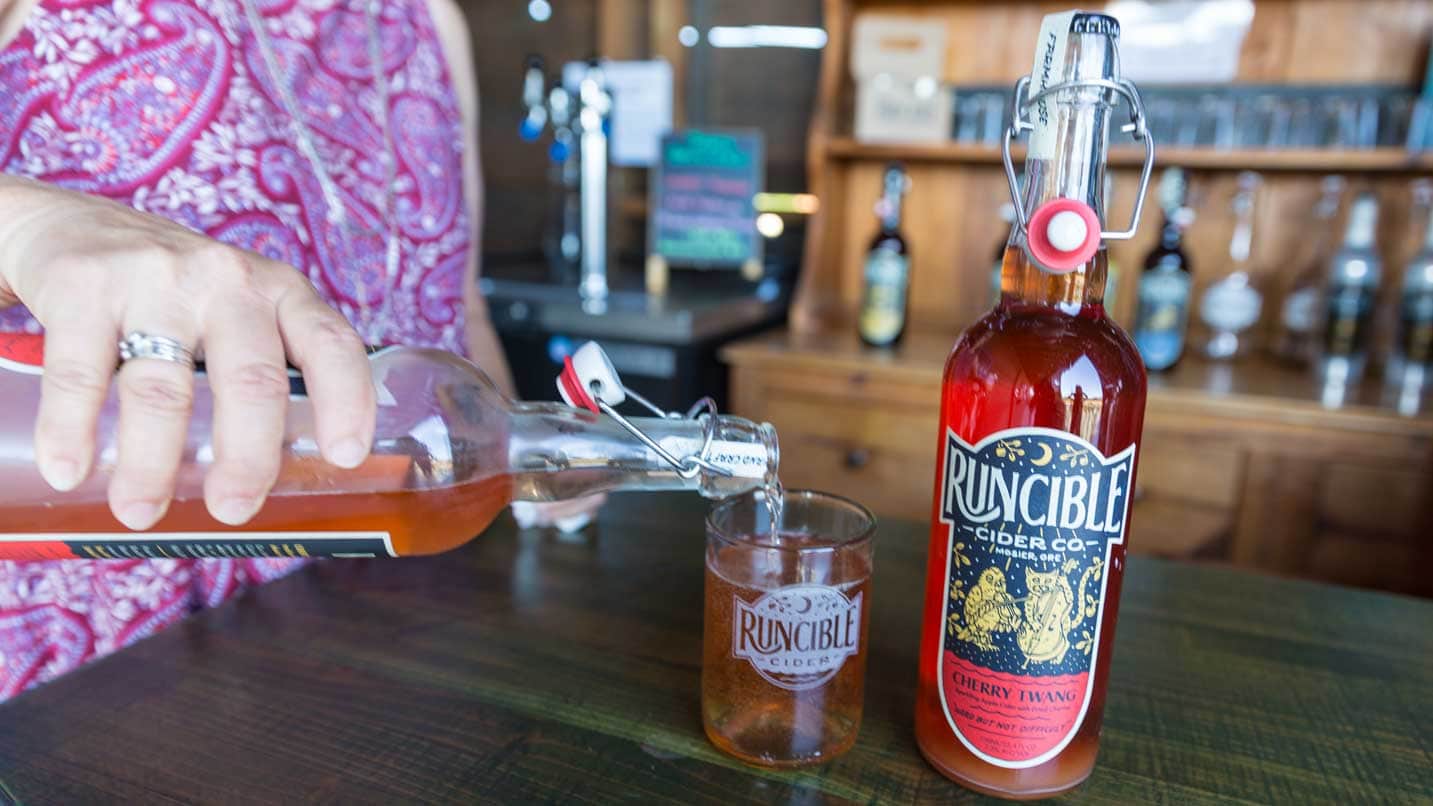
Oregon Cider
Just as with Oregon’s world-class wine and craft-beer scenes, the cider revolution is based on the bounty of the fruit of the land — and the talented makers who forge their deliciousness. This pioneering craft-beverage endeavor is rooted in the heirloom apple and pear orchards first planted by 19th-century farmers. From the Columbia River Gorge to Southern Oregon and the Willamette Valley, Oregon has seen about two dozen cideries pop up in recent years, bringing the total number to nearly 90. While most cideries are open year-round for tasting, fall is considered cider season because it’s harvest time — when fruit is at its peak. It’s worth a trip to an orchard-based tasting room such as Runcible Cider on the East Gorge Food Trail, to sip precisely where the apples are grown. Cider makers are also a diverse bunch; new to the scene is La Familia Cider in Salem, a family-owned operation built on their mother’s recipe for homemade aguas frescas. Mark your calendar for Oregon Cider Week in June.
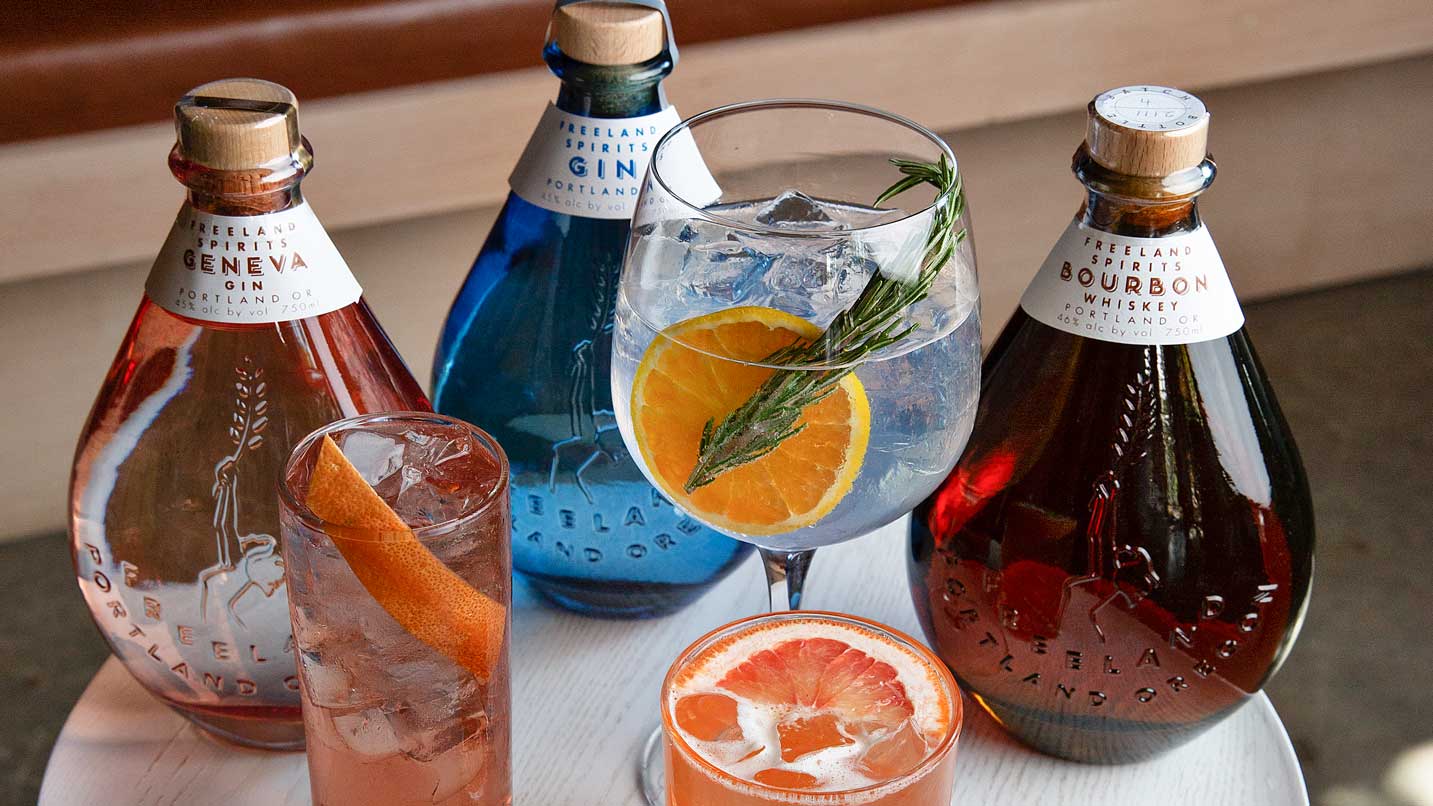
Oregon Spirits
The Beaver State’s distilleries are turning out whiskey, vodka, gin and more in signature styles, with nearly 60 distilleries and tasting rooms around the state. Many independent-minded makers offer their own unique twists, from the smoky, rich and spicy Puerto Rican-style rum at Flooded Fox Den Distillery in Forest Grove to the gin infused with handpicked Oregon juniper berries, handpicked lavender and regionally sourced golden pear at Gompers Distillery in Redmond. Branch Point Distillery in Dayton uses local grains and traditional methods to mash, ferment, distill, mature and bottle their small-batch whiskeys on-site. Oregon Grain Growers Brand Distillery produces their signature spirits with Umatilla County grains and locally sourced ingredients in Pendleton. Portland’s Freeland Spirits is a rare woman-owned and operated distillery, producing exquisite gin and bourbon from local ingredients. On both Portland’s east and west sides, you’ll find Distillery Row’s visitor-friendly tasting rooms, where you can sip to your heart’s content.


